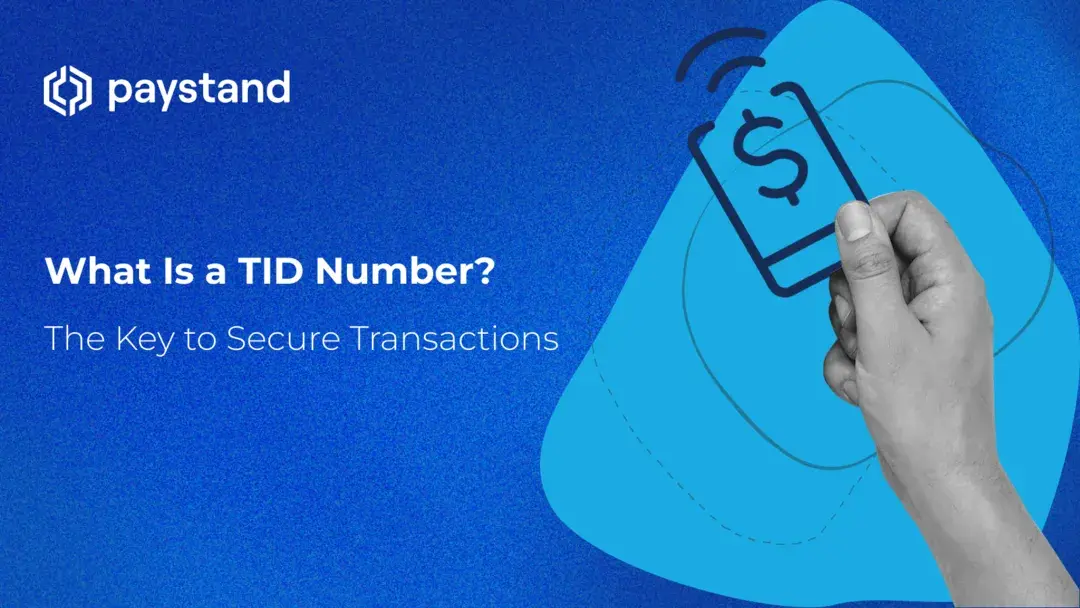What Is a TID Number? The Key to Secure Transactions

Table of Contents
- What Is a Terminal ID Number (TID)?
- How to Get a TID?
- How Do I Find My TID Number?
- Why Is It Important to Find Your TID?
- How Do TIDs Help Banks and Processors?
Key Takeaways
- Terminal ID Numbers (TIDs) are unique identifiers assigned to payment terminals. They are crucial for identifying the specific device that processed a transaction.
- TIDs enhance transaction security, detect fraud, streamline reconciliation, and improve chargeback management.
- TIDs differ from Merchant ID Numbers (MIDs), which identify the merchant rather than the terminal.
- TIDs are essential for regulatory compliance and provide valuable business intelligence and sales tracking data.
- Obtaining a TID involves contacting a payment processor, completing an application, and configuring the payment terminal.
- TIDs are pivotal in ensuring electronic payment transactions' efficiency, accuracy, and security, benefiting both banks and businesses.
TID is an important piece of information included in digital payments. It identifies the specific device processing the transaction and can be used for many purposes, like fraud detection, sales tracking, and customer service.
Overall, TIDs are pivotal for streamlining electronic transactions, enhancing security, easing dispute resolution, simplifying reconciliation, ensuring regulatory compliance, and providing data for business intelligence. By effectively leveraging TIDs, banks and processors can improve financial transactions' efficiency, accuracy, and security, benefiting businesses and consumers.
What Is a Terminal ID Number (TID)?
A Terminal ID Number (TID) is a unique identifier assigned to each electronic payment terminal or point-of-sale (POS) system. It is used to identify the specific device that processed a transaction and is typically included in the transaction data sent to the payment processor.
How TID Works?
- Each payment terminal or POS system is assigned a unique TID when it is set up.
- The TID is usually a combination of numbers and letters, typically displayed on the terminal or POS system.
- When a transaction is processed, the TID is included in the transaction data sent to the payment processor.
- The payment processor uses the TID to identify the specific terminal or POS system that processes the transaction.
- This information can be used for various purposes, such as fraud detection and tracking sales.
What Is the Difference Between a TID and a Merchant ID Number (MID)?
TID is a unique identifier for a specific payment terminal, while a MID is a unique identifier for a merchant. Both play important roles in electronic payment transactions, ensuring security, fraud prevention, and the proper routing of funds.
While serving similar purposes, the two have some key differences.
| TID | MID | |
|---|---|---|
| Scope | Specific to a particular payment terminal | Associated with the merchant's business |
| Purpose | Mainly used for security and fraud prevention | Used for merchant identification and fund routing |
| Format | Typically, a short numeric code | It can be a combination of numbers and letters |
| Assignment | Typically generated by the payment processor | Assigned by the payment processor or acquirer |
How to Get a TID?
You must contact your payment processor or acquirer to obtain a TID. Here are the steps to get it:
-
Contact your payment processor or acquirer: Provide them with your business information, such as legal name, address, and contact details.
-
Complete the Application Process: Fill out an application form from your payment processor. The form may include questions about your business type, transaction volume, and accepted payment methods.
-
Submit Required Documentation: Submit supporting documents like business registration, proof of address, and identification for owners or directors with the application form.
-
Await Approval: The payment processor or acquirer will review your application. Depending on its complexity, approval can take days or weeks.
-
Receive TID: After approval, your payment processor provides a unique TID, usually an 8-digit number or a mix of letters and numbers.
-
Configure Payment Terminal: Configure your payment terminal with your TID. Refer to the user manual for instructions.
-
Start Processing Transactions: Once your payment terminal is configured with your TID, you can start processing transactions. Customers can use their credit or debit cards to make purchases.
Remember to keep your TID confidential to prevent unauthorized access to your payment system.
How Do I Find My TID Number?
A TID number is required to set up a payment processing account and may also be needed when troubleshooting payment issues. There are a few different ways to find your TID number:
-
Look at the card reader or POS system: The TID number is on the label or accompanying documentation.
-
Contact payment processor: They can provide the TID number. You can usually find their contact information on the monthly statement or website.
-
Check online account: Your TID number is under "TID" or "Terminal ID" in your online payment processor account.
-
Use a TID lookup tool: Online tools can help you find your TID number by entering a business name or address.
Here are some additional tips for finding your TID number:
- If you have multiple card readers or POS systems, each will have its TID number.
- If you replace the card reader or POS system, your TID number may change.
- If you're having trouble finding your TID number, contact your payment processor for help.
Why Is It Important to Find Your TID?
TID is important because it helps identify the specific device that processed a transaction. This information can be useful for several reasons, including:
-
Fraud detection: TID identifies the terminal or POS involved in a suspected fraudulent transaction, aiding in investigation and response.
-
Sales tracking: TIDs track sales, identify trends, and aid businesses in understanding customer buying habits for better marketing and sales decisions.
-
Customer service: TIDs help customer service identify specific transactions and provide necessary information.
How Do TIDs Help Banks and Processors?
TIDs facilitate efficient and secure electronic transactions, benefiting banks and payment processors. Here's how they contribute to the smooth functioning of the financial ecosystem:
-
Unique transaction identification: TID is a unique code that identifies transactions and allows banks to track, monitor, and manage them. It helps retrieve transaction details like amount, date, time, and merchant information.
-
Fraud detection and prevention: TIDs help detect fraud by analyzing patterns and identifying suspicious transactions. This helps banks flag potentially fraudulent transactions, reducing financial losses and protecting customers.
-
Chargeback management: TIDs enhance chargeback management by enabling quick location and information gathering of disputed transactions, facilitating efficient communication to resolve disputes and reduce chargebacks.
-
Reconciliation and settlement: TIDs facilitate reconciliation and settlement between banks and processors, enabling accurate transaction matching and streamlined account reconciliation.
-
Regulatory compliance: TIDs help banks meet regulatory requirements, like PSD2's SCA mandate, by verifying transactions and ensuring compliance.
-
Data analytics and business intelligence: TIDs provide valuable data for banks and processors to analyze customer spending, merchant performance, and transaction trends, aiding informed decisions and service optimization.
Understanding TIDs' role in electronic payments is essential for secure and efficient transactions. Businesses can effectively leverage TIDs to enhance fraud detection, streamline reconciliation, improve chargeback management, and gain sales insights.
Download our eBook, Removing Friction: A Guide to Streamlining Payments, for strategies and advice on optimizing and improving your business payment processing.







